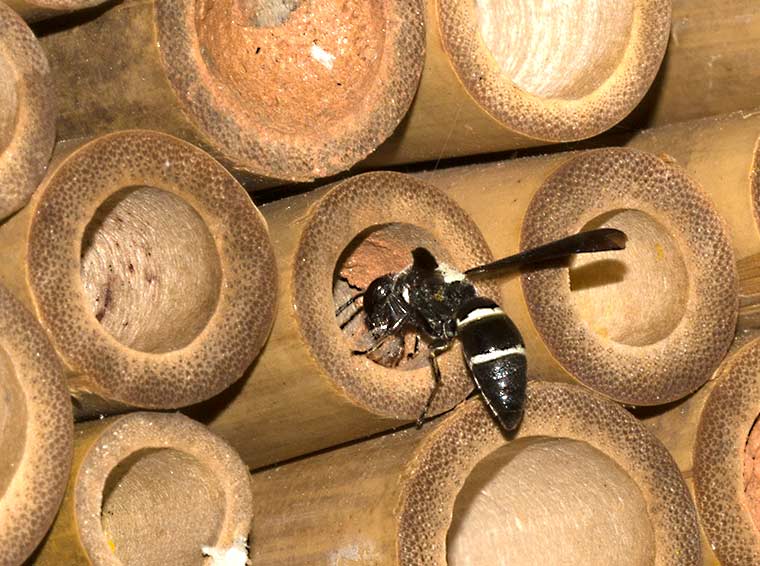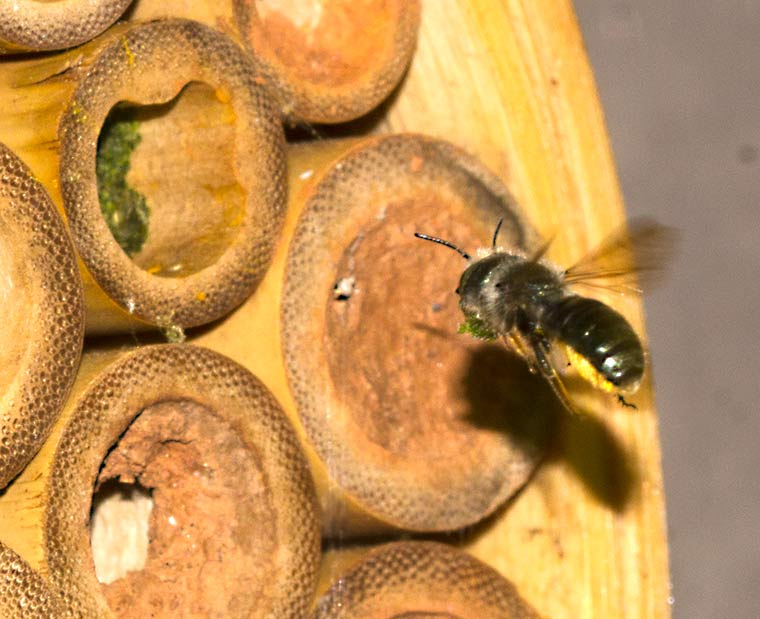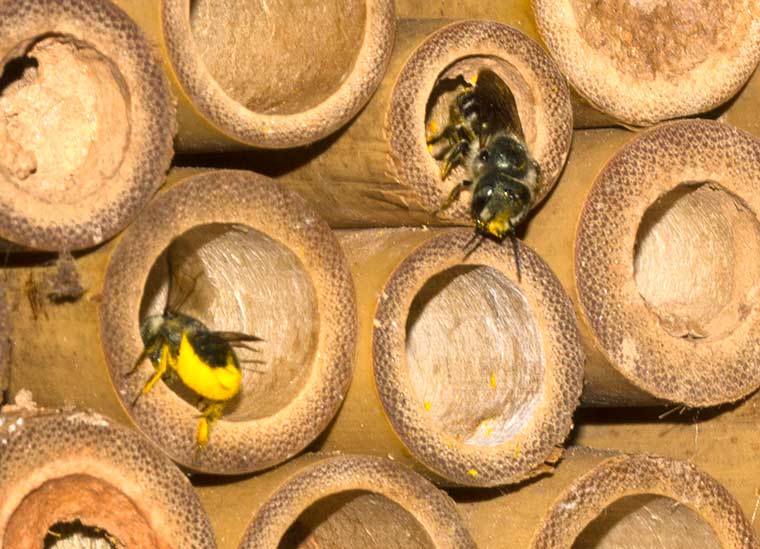Last summer I posted about the occupants of the mason box bee nesting apparatus that my neighbors, Jack and Peggy were nice enough to give me. If you remember, this is basically a basket full of hollow bamboo tubes. Well last summer, I had no mason bees, but I had a great deal of activity from Black and White Potter Wasps (Monrobia quadridens). These large and attractive wasps carried caterpillars into the tubes, laid an egg on the caterpillar, and then sealed the tube with mud.
The photograph above shows a Black and White Potter Wasp at the entrance to a nesting tube.
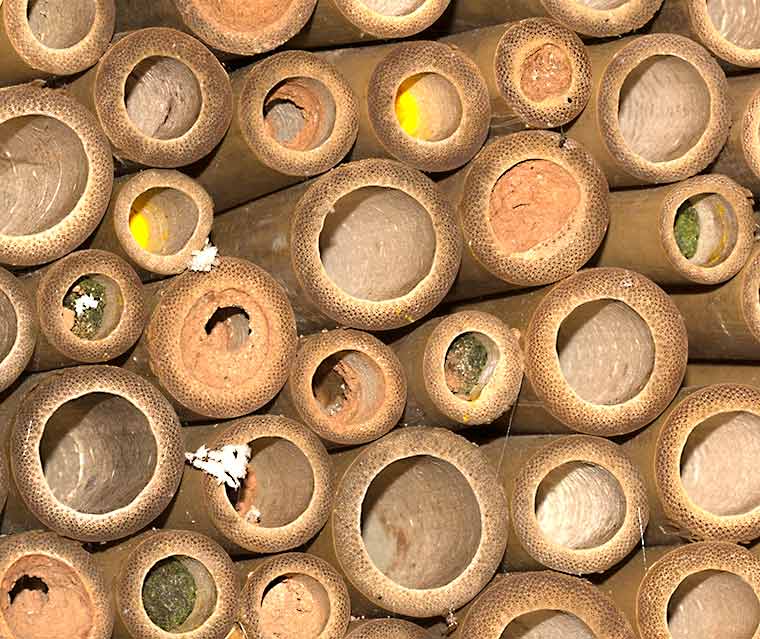
A portion of wasp nesting box. Some of the bamboo tubes contain pollen, others are plugged with mud or leaf fragments.
This summer I noticed that the Black and White Potter Wasps had returned, but there was also a new type of visitor. Some of the bamboo tubes contained a bright yellow material, and other tubes seemed to be sealed with green material.
After I watched for a while, I saw the new occupants in action. The photograph above shows a leaf-cutter bee returning to its nest with a mouthful of leaves that have been chewed into small pieces. These little bees were hard to photograph, because they do not linger outside the nesting tube. The potter wasps were much more cooperative in this respect.
The photograph above shows the origin of the yellow material seen in some of the tubes. It is pollen carried in by the leaf-cutter bees. The bee on the left side of the photograph is returning with a load of pollen on the under side of its abdomen. Some bees, for example honeybees, have special pollen baskets on their legs. Leafcutter bees have a specialized structure called a skopa on the under side of their abdomen. They are able to load this organ with pollen for transportation to the nest. The bee coming out of a tube on the right side of the photograph has deposited its pollen. Its abdomen is free of pollen, only a bit remains around its mouth.
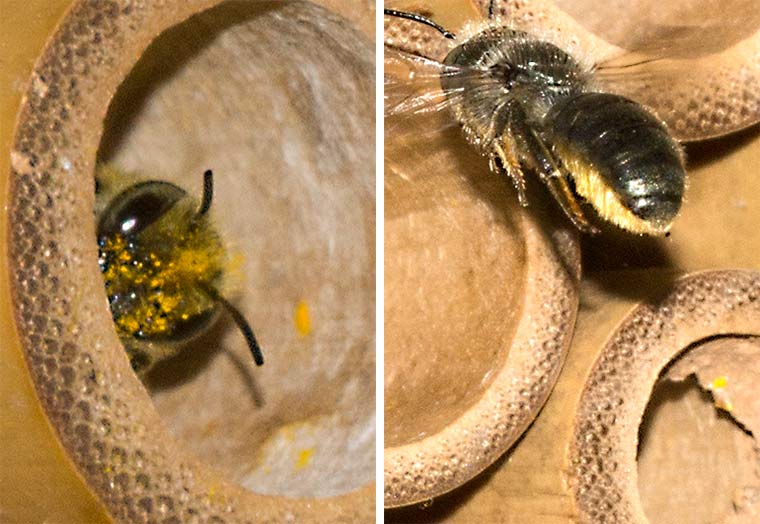
Left: a leafcutter bee peers out of its nesting tube. Right: Leafcutter bee showing skopa on the underside of its abdomen
These bees are vegetarians. They lay their egg on the pollen they have collected and the larva eats only pollen. Potter wasp larvae, you remember, are carnivores. The larvae eat caterpillars that are provided by the parents.
The photograph on the left shows a leafcutter bee emerging from the nest tube after depositing its load of pollen. Again, some pollen remains around its mouth. The photograph on the right shows the specialized structures for carrying pollen on the underside of the abdomen.
Leafcutter bees are important pollinators of both native plants and cultivated crops. Some species have been imported just for pollinating crops.
I think the bees pictured in this post are a species of the genus Megachile, but I am not sure which species they are.

